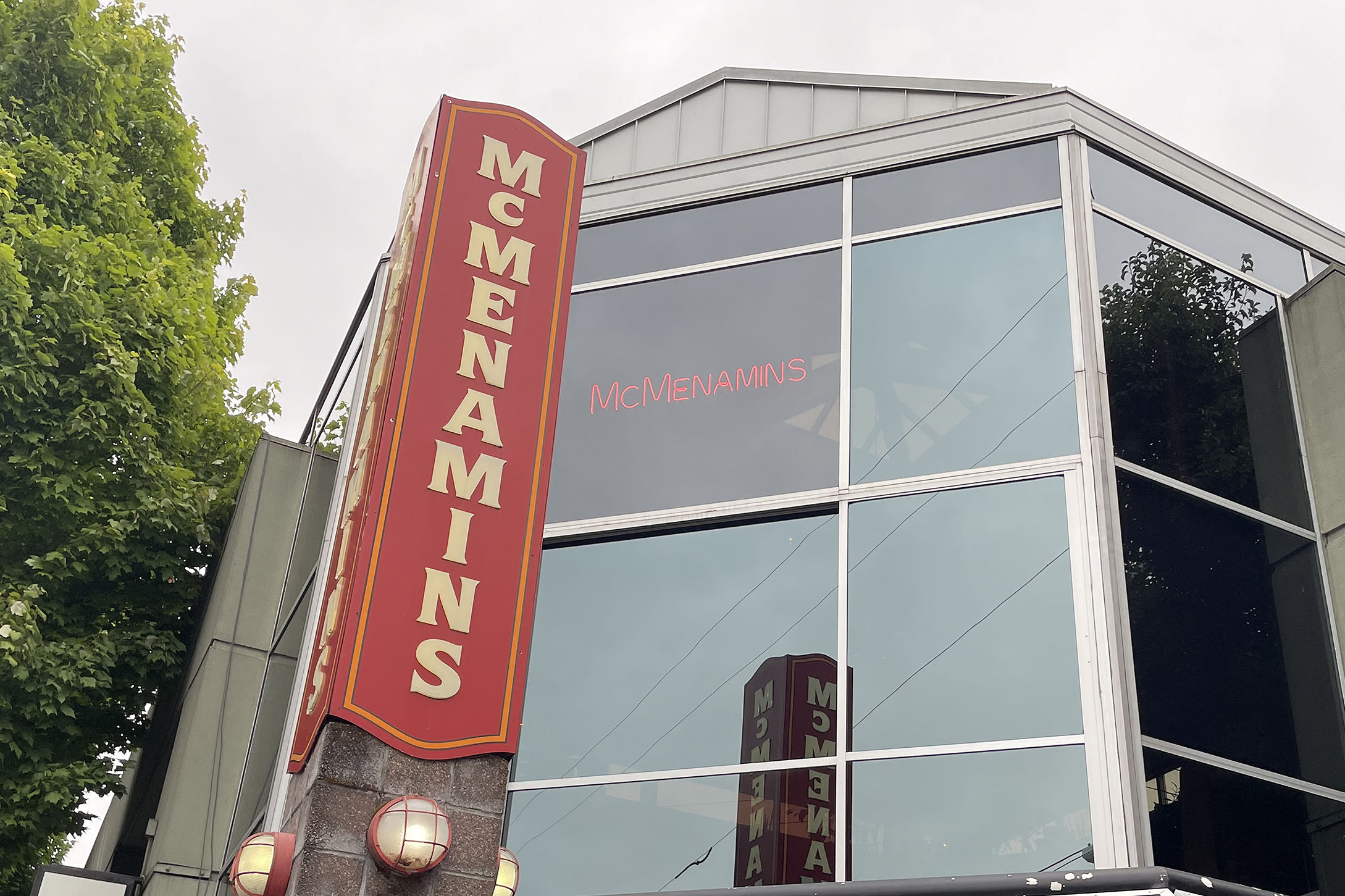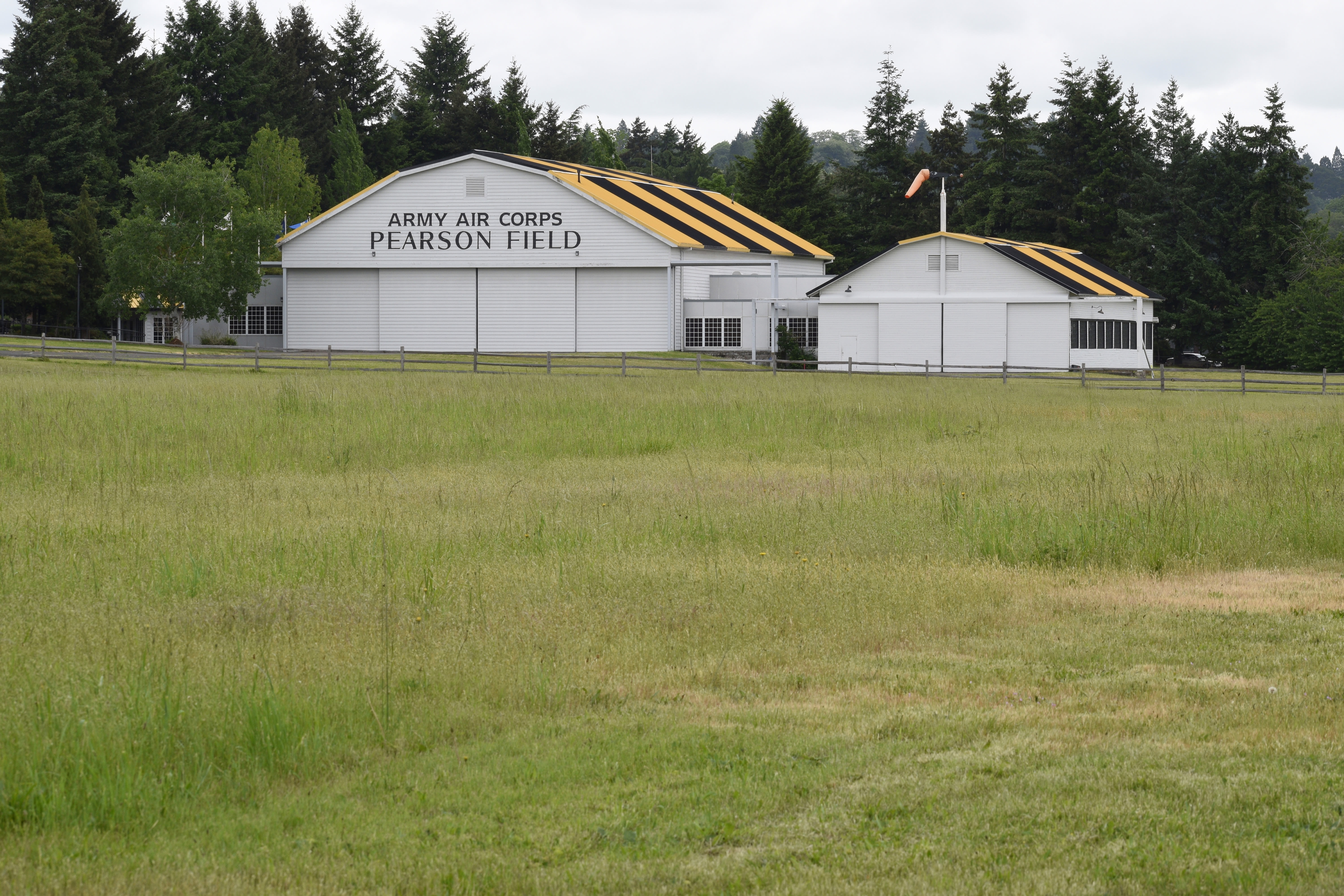A Fall Day in Troutdale via TriMet’s 77

I thought I’d been to Troutdale. I’ve overnighted at Edgefield, the crown jewel of the McMenamins empire. I’ve made many a pre–road trip pit stop for gas and fast food along Frontage Road, braved the traffic bloodsport that is visiting Sugarpine on the way home from Gorge adventures, and skirted its airport en route to Marine Drive for a shortcut home to North Portland.
But after spending a day there on foot, conveyed to this eastern edge of the urban growth boundary by TriMet’s 77 bus, I realize I’ve let my impression of Troutdale be shaped by what’s basically the town’s executioner: Interstate 84. That road’s predecessor, now known as the “Historic” Columbia River Highway, took travelers right through Troutdale proper before crossing the Sandy River and climbing up into the hills, whereas I-84 makes it easy for drivers to skip altogether.
The 77, which takes about an hour to travel from the Rose Quarter to Troutdale (you can shorten the trip a bit by taking the MAX instead and switching to the bus at 82nd Avenue) approaches town not on the interstate but along NE Halsey Street, passing the leafy Glendoveer Golf Course and Edgefield campus before letting me out right next to the “Gateway to the Gorge” arch that welcomes visitors to Troutdale’s main drag.
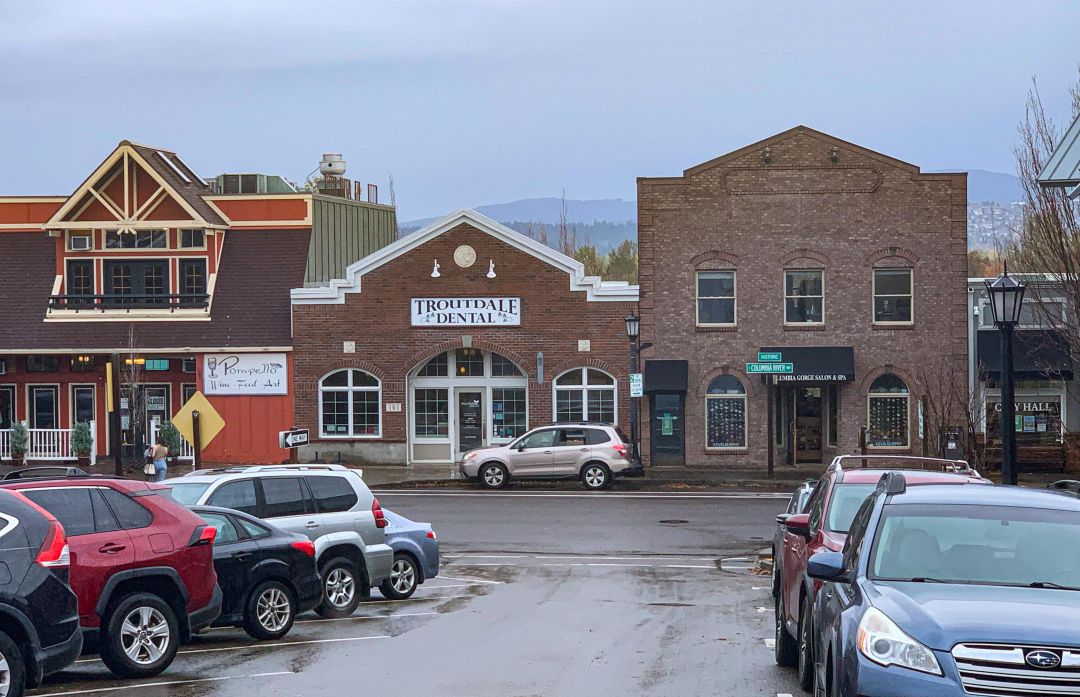
Image: Margaret Seiler
I’ve come on a fall Thursday to catch the limited afternoon operating hours of a museum. When I was checking its hours online beforehand, I noticed a City of Troutdale community walk happening at 10am through the new Sharon Nesbit Heritage Park and along the Ch’ak Ch’ak Trail by the Sandy River, so now I have a morning plan, too. I took a 77 that would get me to town in time to grab coffee and something to eat first. I walk toward the giant Good Coffee roastery, whose sheer size seems to exert a gravitational pull, until I catch sight of a dog with ice-blue eyes sitting in a doorway and step out of Good’s tractor beam to say hello. The dog just walks away, toward a table full of friends chatting, but I stay for an English muffin breakfast sandwich and coffee at the airy Troutdale Soda Bar Café, which also sells ice cream, popcorn, handknit scarves, and pink Santa earrings in a building that was once a general store. I learn the dog’s name is Ripley, and he’s such a regular here that a portrait of him, painted by another regular, hangs on the wall.

Image: Margaret Seiler
As I eat my hangover-cure-worthy sausage, egg, and cheese sandwich, I try to get him to come back my way. My crush is one-sided, as Ripley doesn’t seem to care about me at all. Eventually I give up on befriending him and head toward the Union Pacific caboose at the end of the street for the community walk. There are a few dogs here, too, along with some parents pushing baby strollers and women with cameras at the ready should we see a heron or eagle. (The Ch’ak Ch’ak Trail, which connects the town to the 40 Mile Loop trail system, takes its name from a Chinook Wawa term for bald eagle.)
The walk is led by Chris Garza, the Troutdale Historical Society executive director and an impressive spinner of yarns. He tells us that, 100 years ago, this land was known for producing a white celery in high demand at fancy restaurants in Portland and beyond. The color, or lack thereof, was actually nothing special—just some farmers who had figured out a way to sun-bleach their crop and convince chefs the plain old celery was a delicacy. As we continue along the path to a patch of land that will soon host a new play structure and water feature, Garza says we’re near the site of an old wool pullery, or hide-tanning facility, where workers once found a black cat smushed in a shipment of sheepskins. They assumed it was dead, but a tannery worker was able to revive it. Called Midnight, the cat became one of the town’s most beloved residents. Passing under I-84, we spot a black cat darting in and out of the brush on the opposite bank of the Sandy River, and I wonder if it’s a descendant.
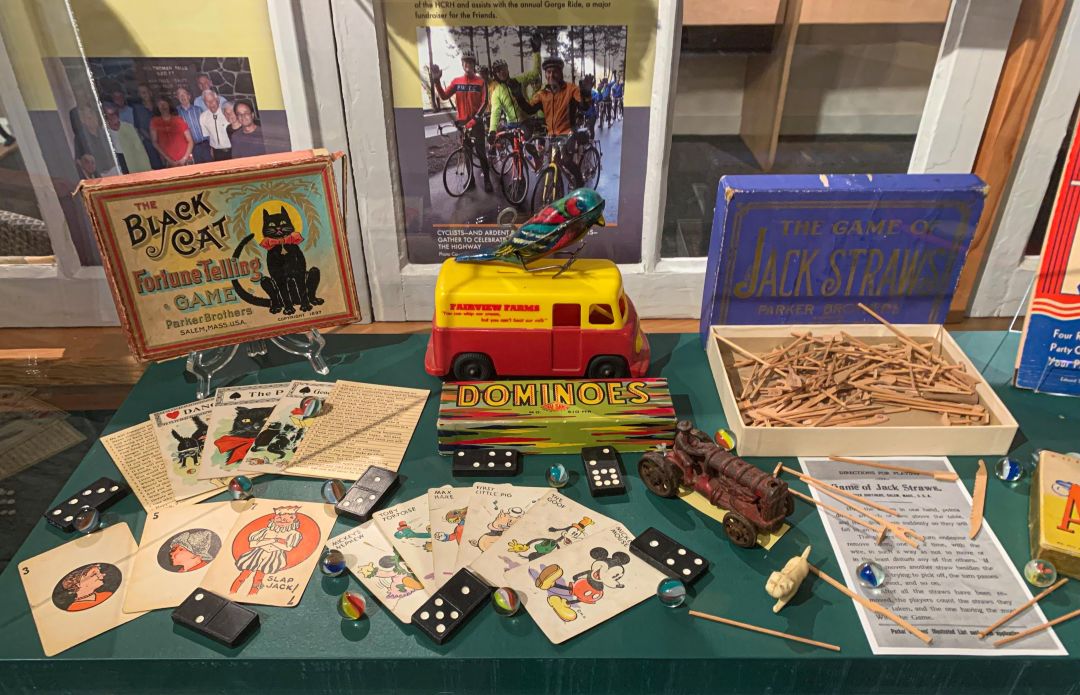
Image: Margaret Seiler
Along with celery, the area was known for gladiolus and dahlias before an aluminum smelter moved in, our guide tells us, bringing jobs along with unchecked environmental contamination. The smelter operated from 1941 to 2000, and the park areas we’re walking through are part of a long recovery of a Superfund site. Garza touches on other disasters and setbacks in the town, including a massive fire suspected to have been caused by the bootlegging husband of an early mayor who’d been a public supporter of Prohibition.
The dogs on our walk and the many we pass along the trail don’t care a lick for this history. A lot of them are on their way to or from the 1000 Acres Dog Park, which the city’s website deems “Doggy Disneyland.” I don’t think I can bring my 60-pound border collie on TriMet, alas, so I plot a future trip in a car to explore the Sandy River delta properly, and head back into town on foot after the history walk wraps up.
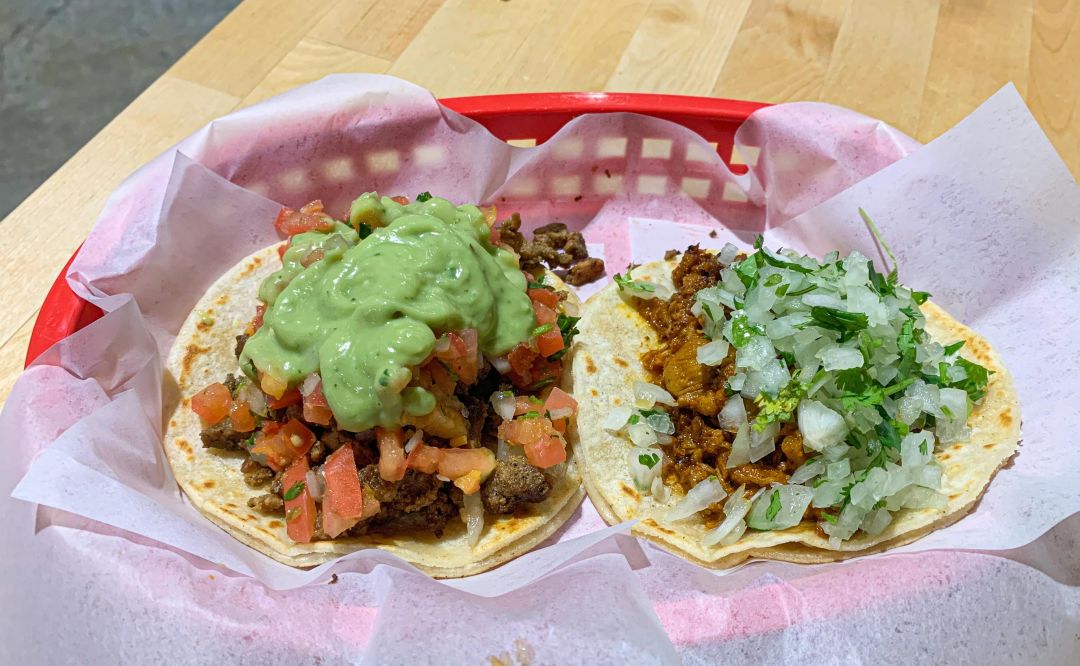
Image: Margaret Seiler
Downtown Troutdale is only a few blocks long, but its lunch options are vast—as are, I discover while walking around, its number of barber shops/hair salons, home decor shops, and posters for upcoming high school or community theater performances of Radium Girls and Anne of Green Gables. The Troutdale Burrito Shop, part of a local chain, sells its namesake items as well as tortas and tacos piled high (almost too high!) with carne asada or carnitas. An apple-brie-sage pie is the “farm-to-table” special of the day at LoLo’s Boss Pizza, which has a serious Smokey Bear decor theme. The shop traces its dough recipe to a Greek man from Chicago who ran a café in Portland in the ’80s, and features both a gluten-free crust option and a lot of pro-gluten signage. The cozy Ye Olde Pub offers a beer cheese fondue on its own or as part of the bar’s “take on an Irish Nacho” (which involves potatoes) or its “English Style Nachos” (which involve tortilla chips, and, yes, I’m also a little confused). Bandits Bar & Grill has pulled-pork sliders and a popular Cubano sandwich. A block uphill, next to some apartment buildings under construction, a satellite location of Wayfinder Brewing hosts pizza and ice cream counters as well as a row of food carts. A couple of blocks away, across 257th Avenue from the downtown core, Troutdale Station has even more food carts, including local standards like Esan Thai and Le Bistro Montage Ala Cart, surrounding a barnlike building with a bar, a mini-doughnut seller, a merch stand, a selfie backdrop, posters for bingo and paint nights, TVs showing football, and a sound system blasting Vanessa Carlton over the cacophony of buzzers telling people their food is ready.
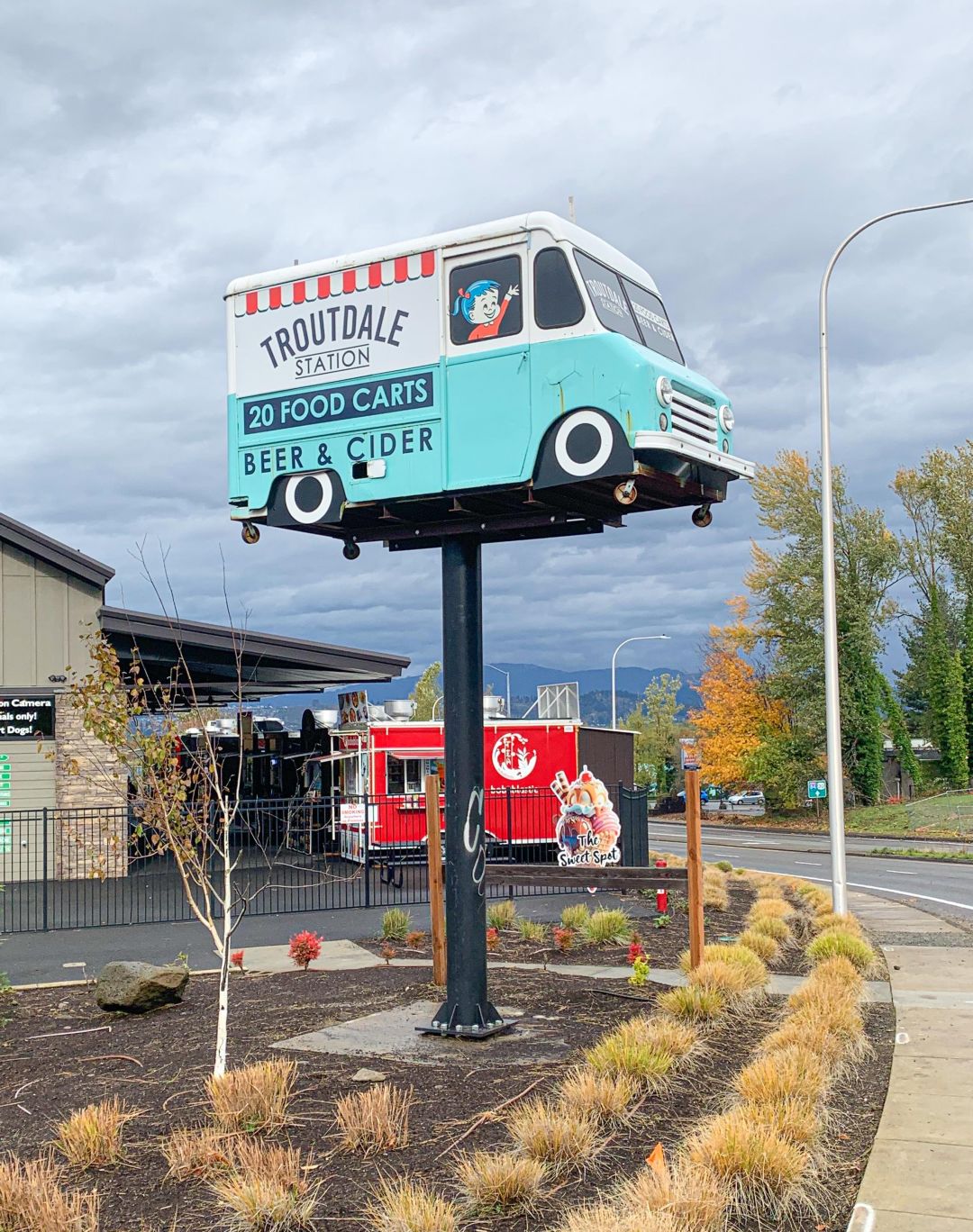
Image: Margaret Seiler
I settle on tacos from downtown’s Burrito Shop and also grab an order of samosas from Hyderabad Hub at Troutdale Station. Then I walk about a mile to the opposite side of town to visit the Troutdale Historical Society’s Barn Exhibit Hall, open noon to 3pm. Outside, there’s a concrete recreation of a famous tree called the Lovers Oak, with a trunk shaped like the numeral 5 tipped on its side. Inside, exhibits document the planning and construction of the Historic Columbia River Highway, an engineering marvel and tourism draw. There are artifacts from businesses that once lined the route, from the Handy Bros. Service Station to Tad’s Chicken ’n’ Dumplings. (The original Tad, I learn, was really named Ralph.) The barn’s gift shop sells books on local history, including a few by park namesake Sharon Nesbit, and little black plush versions of Midnight the cat.
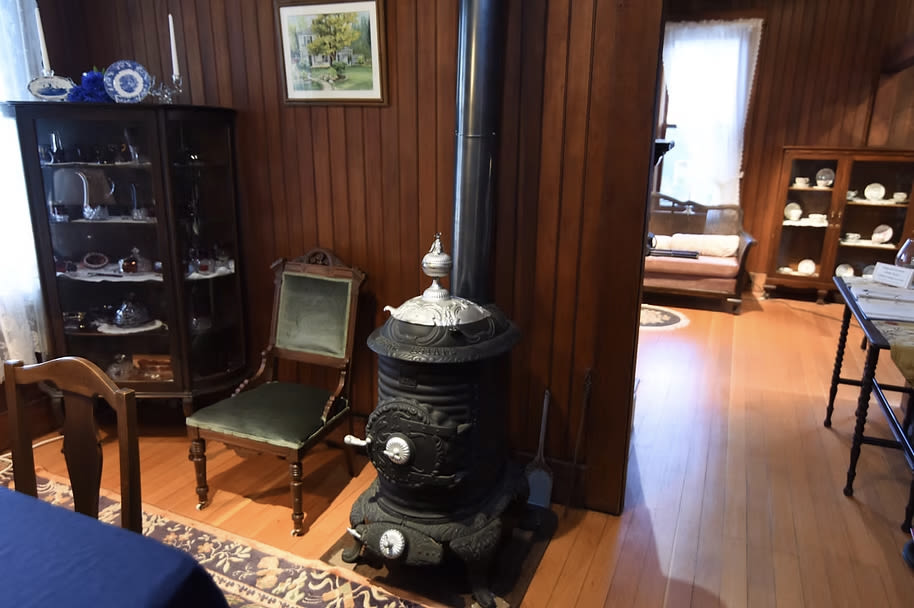
Garza, who led the community walk in the morning, is staffing the Barn Exhibit Hall this afternoon, and he takes museum visitors across the lawn to the Harlow House, which was built by a son of city founder Capt. John Harlow. He points out the period wallpaper and appliances, the confoundingly high ceilings that made the drafty house hard to heat, and a very creepy horsehair-stuffed faceless doll.
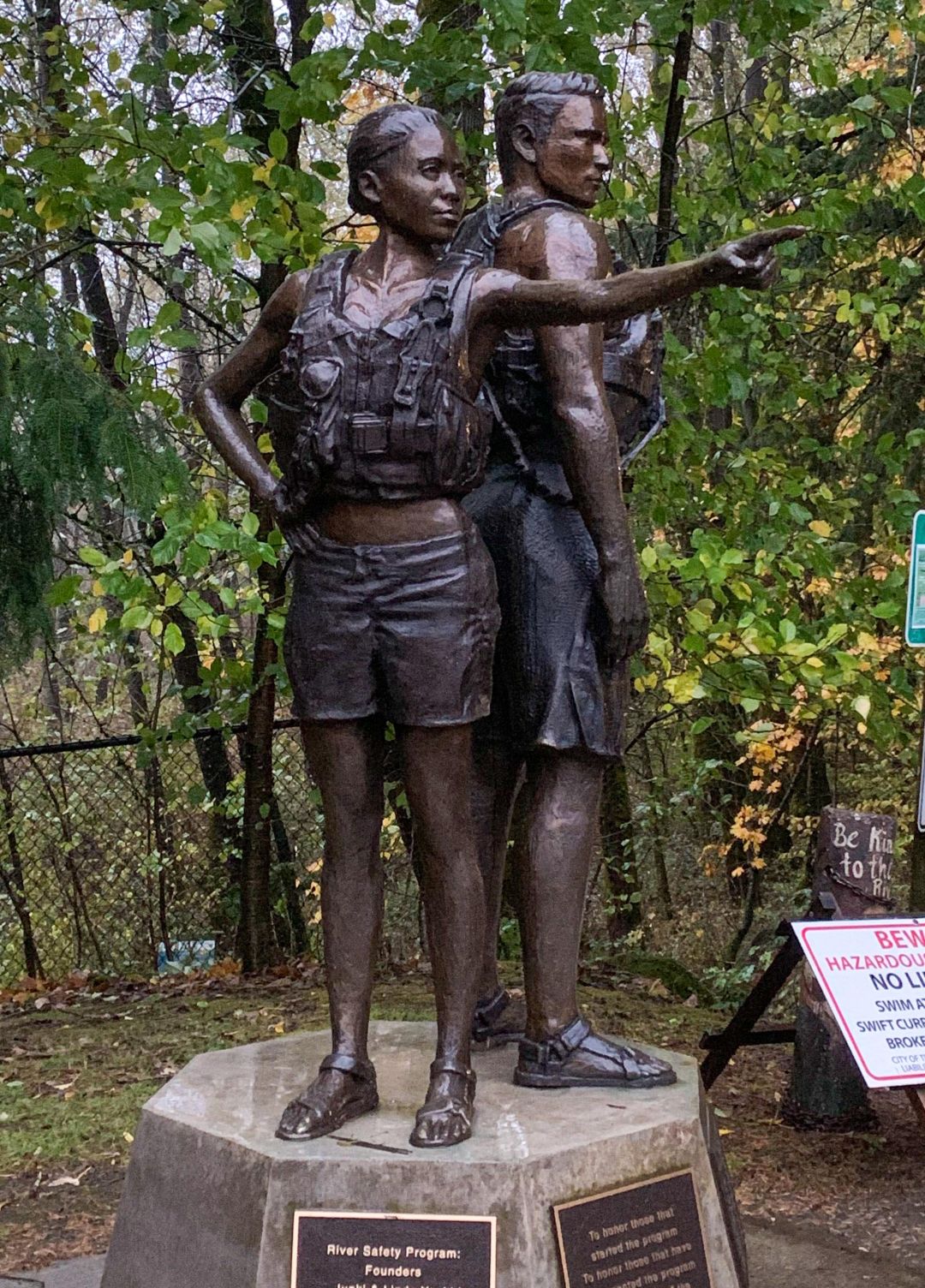
Image: Margaret Seiler
Continuing down the historic highway past its museum, a statue of road builder Sam Hill and engineer Sam Lancaster looks from afar like it could be Lewis and Clark–related, with a pair of people pointing. But these guys are pointing east, toward the scenic Columbia River Gorge. A little farther on, in Glenn Otto Community Park, there’s another statue of two people pointing; it’s not Lewis and Clark, either. This one is of two unnamed lifeguards and was installed in 2019 to honor the people who help keep an eye on this often-deadly stretch of river. I’m not used to seeing statues of young, fit, midriff-baring people in shorts and Tevas, but I approve. (Sculptors of the world, can I put in a request for more statues of, say, Greg Louganis and fewer of political or military leaders, or even road engineers, in all their boring layers?)

Image: Margaret Seiler
On a rainy fall day, the riverbanks are practically empty. So is Sugarpine Drive-In, the ice cream sundae restaurant that’s some people’s definition of summer. But after one taste of the soup of the day—a curried butternut squash with cinnamon-and-chile candied pecans, lime leaf pepitas, and an apple-mint relish—I’m ready to declare fall its true reason for being. Blankets hang on chair backs and a heated tent with extra seating glows in growing darkness, and I wonder if I might have room for some pumpkin-maple nondairy ice cream or a hot apple cider with kettle corn cold foam before the place closes at 5pm. I get a waffle cone to go for my nearly mile-long walk back to the bus stop and vow to plan my dog-in-tow automobile trip to Troutdale very soon so I can catch more fall specials.
For a summer trip, though, when Sugarpine is mobbed and parking near the river becomes a bloodsport, I’ll let the 77 bring me back. My own dog will have to stay home, but maybe I’ll bump into Ripley again, and the second time will be the charm for us.
